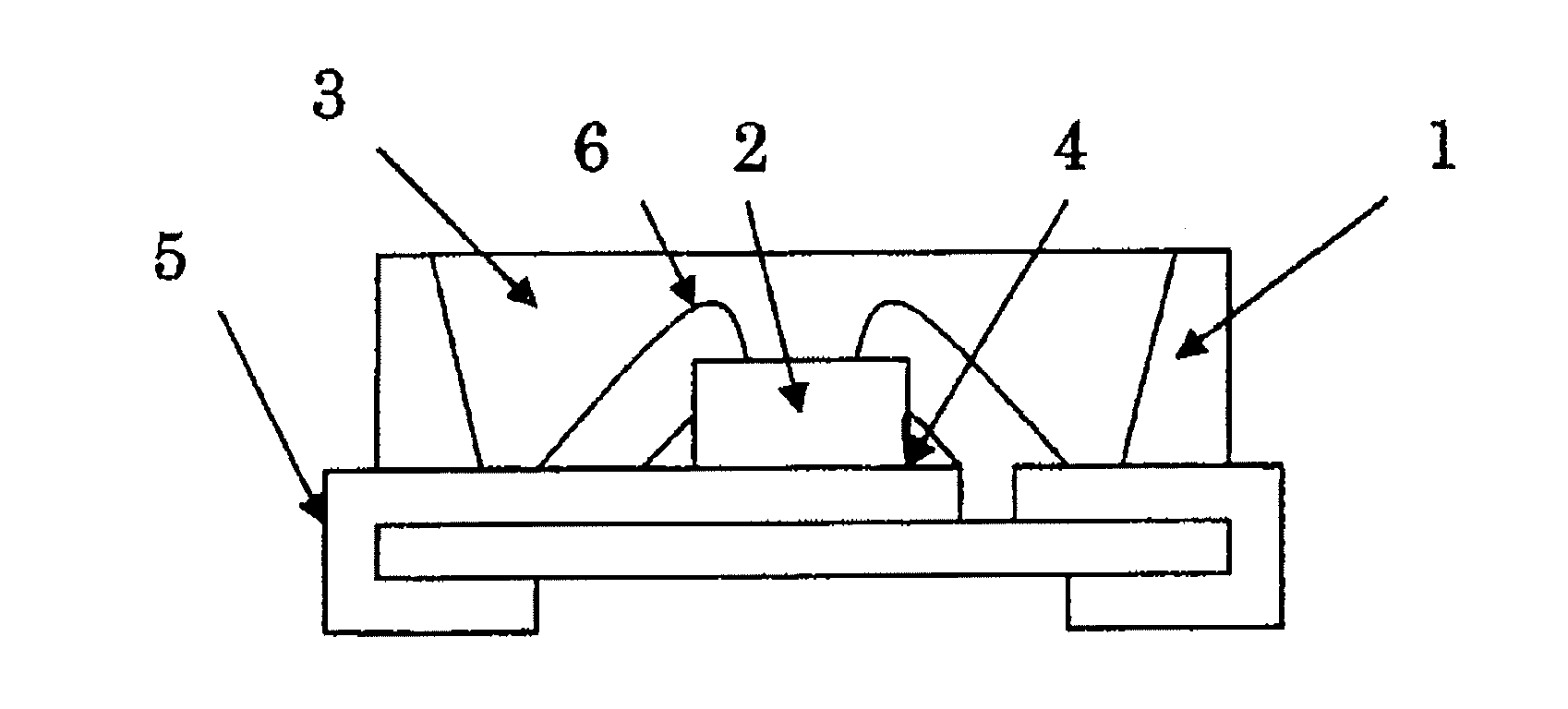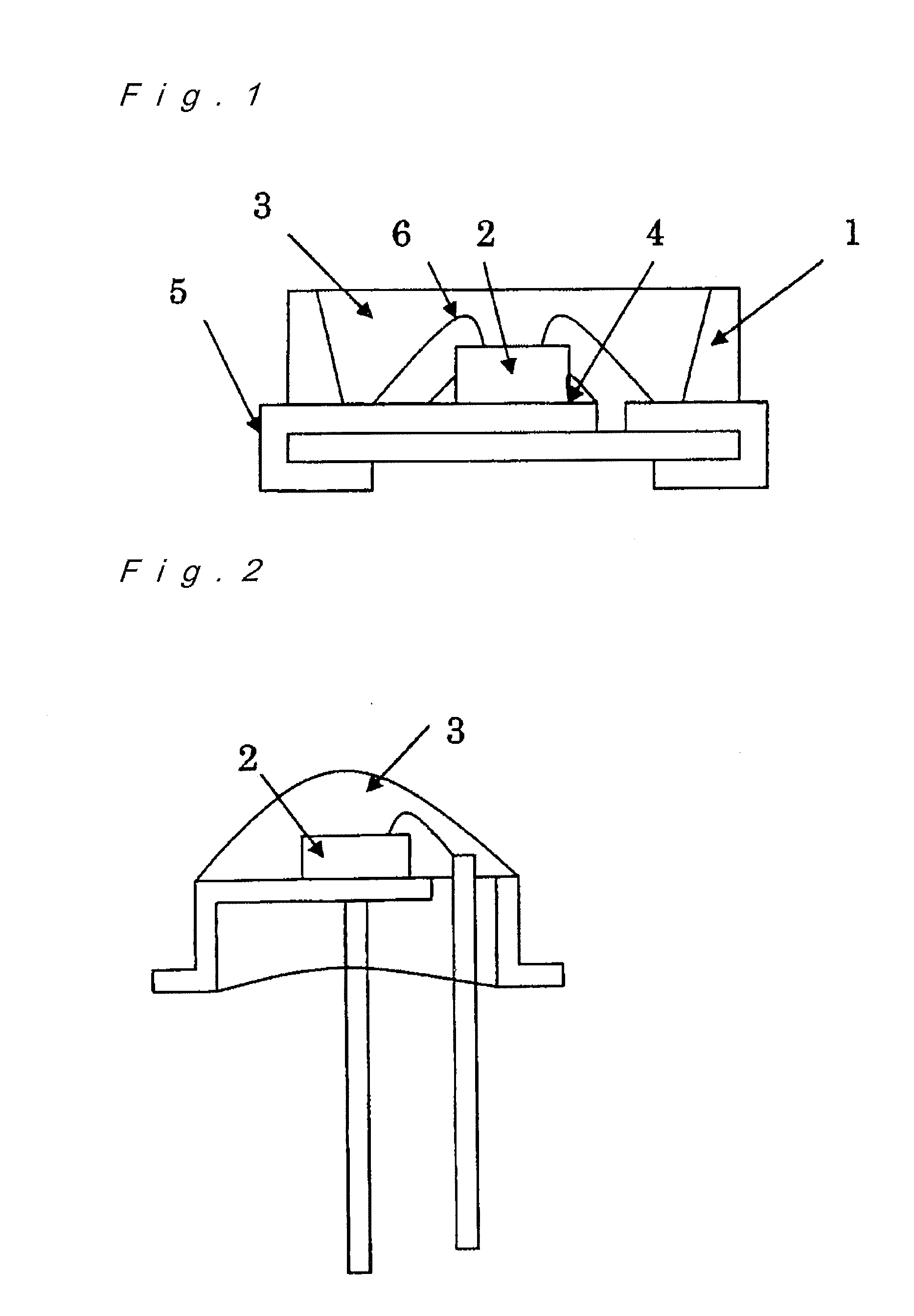Light emitter
- Summary
- Abstract
- Description
- Claims
- Application Information
AI Technical Summary
Benefits of technology
Problems solved by technology
Method used
Image
Examples
example 1
[0034]By an MOCVD epitaxial growing method, the following was formed on a C-surface sapphire substrate: a wafer which had a light emitting structure having a light emitting layer of InGaN and giving a dominant wavelength of 460 nm. The sapphire substrate was then polished into a thickness of about 100 μm. The wafer was then cut by a scribing method to form blue LED chips each having a size of 0.35 mm×0.35 mm. Next, prepared was a lead frame on which many packages in which of each a reflecting case was formed by injection mold were put, and the blue LED chips were die-bonded into the packages on the lead frame by a die-bonding agent made of a silicone resin. The agent was then cured. Thereafter, gold lines each having a diameter of 25 μm were used to carry out wire bonding on the anode side and the cathode side.
[0035]As a silicone resin of a sealing resin, a resin SRC 1011 manufactured by Shin-Etsu Chemical Co., Ltd was used. The specific gravity of this resin was 1.1×103 kg / m3. As p...
example 2
[0037]An LED was formed in the same way as in Example 1 except that the plastic balls the particle diameter of which was changed to 10 μm were used in a proportion of 3% by weight in Example 1. The light output of the LED was measured. As a result, the light output was 15% better than that of an LED wherein no plastic balls were used.
example 3
[0038]By an MOCVD epitaxial growing method, the following was formed on a C-surface sapphire substrate: a wafer which had a light emitting structure having a light emitting layer of InGaN and giving a dominant wavelength of 460 nm. The sapphire substrate was then polished into a thickness of about 100 μm. The wafer was then cut by a scribing method to form blue LED chips each having a size of 0.35 mm×0.35 mm. Next, prepared was a lead frame on which many packages in which of each a reflecting case was formed by injection mold were put, and the blue LED chips were die-bonded into the packages on the lead frame by a die-bonding agent made of a silicone resin. The agent was then cured. Thereafter, gold lines each having a diameter of 25 μm were used to carry out wire bonding on the anode side and the cathode side. The size of the opening in each of the packages, that is, the upper end size of each of the reflecting cases was 0.7 mm×0.7 mm.
[0039]As a solid transparent resin, plastic bal...
PUM
 Login to View More
Login to View More Abstract
Description
Claims
Application Information
 Login to View More
Login to View More - R&D
- Intellectual Property
- Life Sciences
- Materials
- Tech Scout
- Unparalleled Data Quality
- Higher Quality Content
- 60% Fewer Hallucinations
Browse by: Latest US Patents, China's latest patents, Technical Efficacy Thesaurus, Application Domain, Technology Topic, Popular Technical Reports.
© 2025 PatSnap. All rights reserved.Legal|Privacy policy|Modern Slavery Act Transparency Statement|Sitemap|About US| Contact US: help@patsnap.com



